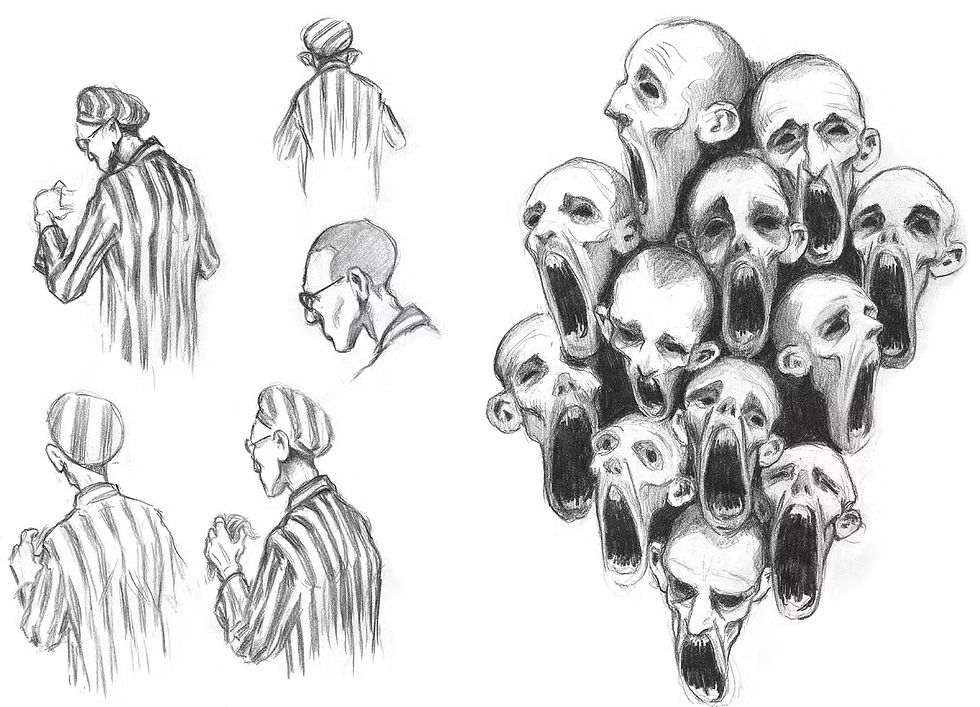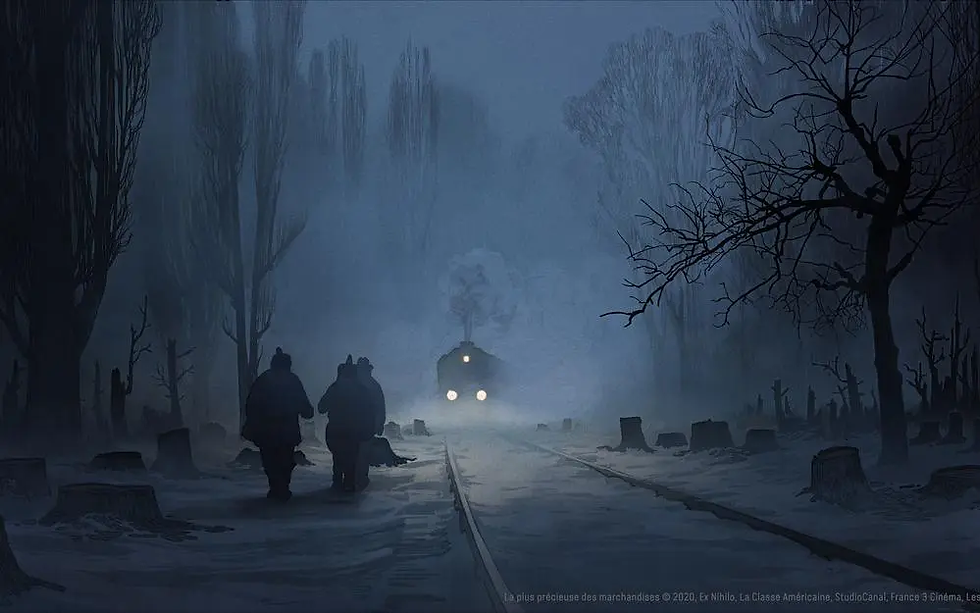The Most Precious of Cargoes by Michel Hazanavicius (2024) article in English
- Planet Claire
- Sep 4, 2025
- 4 min read
running time: 1h21'
director: Michel Hazanavicius
screenplay: Michel Hazanavicius and Jean-Claude Grumberg, author of the short story of the same name on which the film is based
production: co-produced by Robert Guédiguian and brothers Jean-Pierre and Luc Dardenne
soundtrack: Alexandre Desplat
narrator’s voice: Jean-Louis Trintignant
This was the last work of the great French actor, who gave the narration a subdued tone full of humanity.
The Parisian director Michel Hazanavicius became widely known for the award-winning The Artist (2011), a beautiful film shot in black and white, without sound, set in the 1920s at the decline of Silent Cinema.
La Plus Précieuse des Marchandises, presented in competition at the Cannes Film Festival, is a moving and beautiful animated film based on the children’s tale of the same name by Jean-Claude Grumberg, whose father and grandparents were murdered at Auschwitz, while he miraculously survived the abomination of the Shoah. Hazanavicius himself is of Lithuanian Jewish descent, with a family history marked by persecution.
Passionate about drawing since childhood, the director designed the characters himself. For this work, his sketches—previously kept private—were used professionally for the very first time. He personally supervised the animators’ work in rendering each figure visually, in order to achieve the stylistic and emotional effect he sought.
The film employs 2D animation with a clear and simple style: the linework is evocative, the snow-covered forest settings sparse but highly effective. The deportation scenes are rendered with minimal strokes, yet their emotional impact is immense. With its essential form, the film is both adventurous and gripping.
The title overturns Nazi jargon: “merchandise” referred to the Jews destined for the death industry. Here, the most precious merchandise is human life itself, and in particular the life of a newborn.
During the Holocaust, an elderly Polish couple of woodcutters, living in a hut in the forest near Auschwitz and mourning their only son, take in a Jewish infant who had been thrown—presumably by his deported parents—through a slit in a moving death train, as their one desperate attempt to save him. The peasant woman finds the tiny body in a field, half-buried in snow, rescues him, and takes care of him. With patience, she manages to get her husband—despite his deep-rooted antisemitism—to accept the child. The daily miracle of poor folk, choosing humanity over fear, compassion over indifference, transforms a tragic story into a melancholy ode to courage and resistance.
Alexandre Desplat’s score helps create a suspended, poetic, and dramatic atmosphere: a touching, nostalgic orchestral soundscape accompanies the images.
La Plus Précieuse des Marchandises is also a tale of love and salvation, reminding us that in the darkest of times, a gesture, a helping hand, can still save a life.
In the final scenes, the Jewish father—the man who, in an act of desperate hope, had thrown his newborn daughter from the train bound for the concentration camp—has survived the horror of the Lager. Just escaped, he stumbles upon her in a refugee camp, now she’s grown a young girl. He recognises the cloth she had been wrapped in as a baby, displayed on a table while the woman with her sells goat cheese at the market. Seeing his reflection in a shop window, he confronts his own scarred, emaciated face, transformed by the horrors he endured. Fearing he might terrify the child, he chooses to walk away, never revealing his identity. This encounter is a silent, unspoken recognition. It is a powerful and sorrowful narrative twist, deeply moving for the viewer: a father who decides - a bitter choice - to remain in the shadows even while recognising his daughter.
Many years after the war, the father has managed to rebuild his life: he has become a renowned and respected paediatrician, dedicating his life to children. Returning to Warsaw for a medical conference, he happens upon a magazine at a station newsstand and sees the photograph of a young woman who bears an uncanny resemblance to his late wife, murdered in the Lager. He immediately realises that the woman in the photo could be his daughter, the child he once saved by throwing her from the train. Casually, he asks about her and learns that she is featured in the magazine for becoming a model scout, a symbol of patriotism for Polish youth and of the nation’s rebirth after the tragedy of the Second World War. This narrative detail reinforces the theme of resilience and of life flourishing even after horror. The scene highlights the profound, mysterious bond between past and present, loss and hope, ending the film with a mixture of tenderness, regret, and openness to the future. With this conclusion, Hazanavicius does not seek catharsis through drama but suggests, with the delicacy of a gesture, that life, despite everything, can still mend broken threads, even when history has tried to tear them apart.
The photos accompanying my article include the film poster and the character drawings created by the director.













Comments